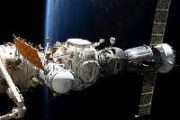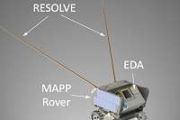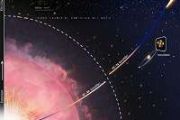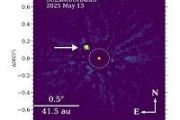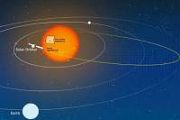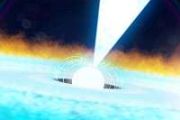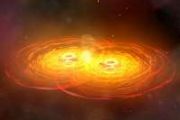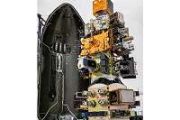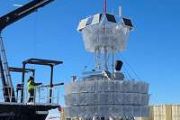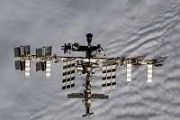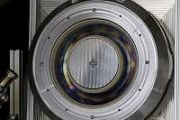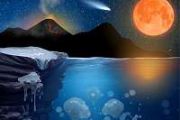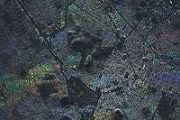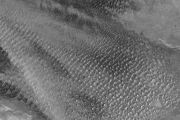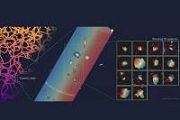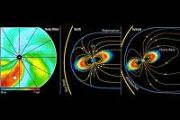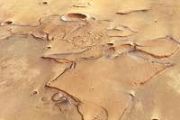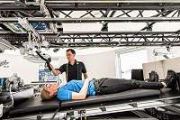
Copernical Team
ICEYE unveils ISR Cell to deliver space intelligence at tactical scale
 ICEYE, a global leader in Synthetic Aperture Radar (SAR) satellite services, has introduced the ISR Cell, a containerized system that gives defense organizations direct, on-site access to tactical Intelligence, Surveillance and Reconnaissance (ISR) from space in near-real-time. The new unit is designed to accelerate decision-making in high-risk environments by shifting satellite intelligence fro
ICEYE, a global leader in Synthetic Aperture Radar (SAR) satellite services, has introduced the ISR Cell, a containerized system that gives defense organizations direct, on-site access to tactical Intelligence, Surveillance and Reconnaissance (ISR) from space in near-real-time. The new unit is designed to accelerate decision-making in high-risk environments by shifting satellite intelligence fro First Tranche 1 satellites launched for Space Development Agency network
 Space Systems Command's Assured Access to Space has successfully placed 21 Proliferated Warfighter Space Architecture (PWSA) Transport Layer satellites into orbit, marking the first launch of Tranche 1 from Vandenberg Space Force Base, California. The mission, supported by Space Launch Delta 30, flew aboard a SpaceX Falcon 9 and delivered York Space Systems-built data transport satellites.
Space Systems Command's Assured Access to Space has successfully placed 21 Proliferated Warfighter Space Architecture (PWSA) Transport Layer satellites into orbit, marking the first launch of Tranche 1 from Vandenberg Space Force Base, California. The mission, supported by Space Launch Delta 30, flew aboard a SpaceX Falcon 9 and delivered York Space Systems-built data transport satellites. For too long, colonial language has dominated space exploration: Is there a better way?
This request seems a bit unusual, so we need to confirm that you're human. Please press and hold the button until it turns completely green. Thank you for your cooperation!
Press and hold the button
If you believe this is an error, please contact our support team.
185.132.36.159 : 78665aa8-a3c8-433c-9e05-bc38ec6d
Celeste mission patch
 Image:
Celeste mission patch
Image:
Celeste mission patch Europe celebrates 30 years of satellite navigation

On 2 September 2025, the European Space Agency (ESA) opened the doors of ESTEC, its research and technology centre, to celebrate 30 years of European satellite navigation. Partners from across the continent gathered for a sensational event that took the audience on a journey through time, honouring the achievements and collaboration that have shaped this success story.
Group photo from General Assembly on Defence, Space and Cybersecurity
 Image:
Image:
Group photo taken at the General Assembly on Defence, Space and Cybersecurity, held on Friday 12 September 2025, at ESRIN, ESA’s Centre for Earth Observation Programmes in Italy.
The event was organised by the European Parliament and the European Commission, in collaboration with the European Space Agency, to promote dialogue between European and national decision-makers and industry leaders. Representatives from major European entities debated the future of the European Union, which is facing unprecedented challenges, in an increasingly complex geopolitical context. Participants examined Europe’s needs in key sectors such as space, cybersecurity, and defence, within the broader context of the
Week in images: 08-12 September 2025

Week in images: 08-12 September 2025
Discover our week through the lens
Columbus: 100 000 orbits and counting

Today, the Columbus laboratory aboard the International Space Station completes its 100 000th orbit around Earth—a remarkable achievement for Europe’s science module in space.
Since its launch in 2008, Columbus has been a hub of research and innovation, orbiting at 28 800 km/h and approximately 400 km above Earth. Over the course of 6427 days, it has travelled more than 4.26 billion kilometres, hosted astronauts from over 20 countries, and supported hundreds of experiments that explore everything from human health to advanced materials.
Earth from Space: Gibson Desert, Australia
 Image:
Part of the Gibson Desert in Western Australia is featured in this image, captured by the Φsat-2 mission in June 2025.
Image:
Part of the Gibson Desert in Western Australia is featured in this image, captured by the Φsat-2 mission in June 2025. NASA fuel storage research launches aboard resupply mission
This request seems a bit unusual, so we need to confirm that you're human. Please press and hold the button until it turns completely green. Thank you for your cooperation!
Press and hold the button
If you believe this is an error, please contact our support team.
185.132.36.159 : 2556a843-039a-45e7-8b5a-19c0c160


